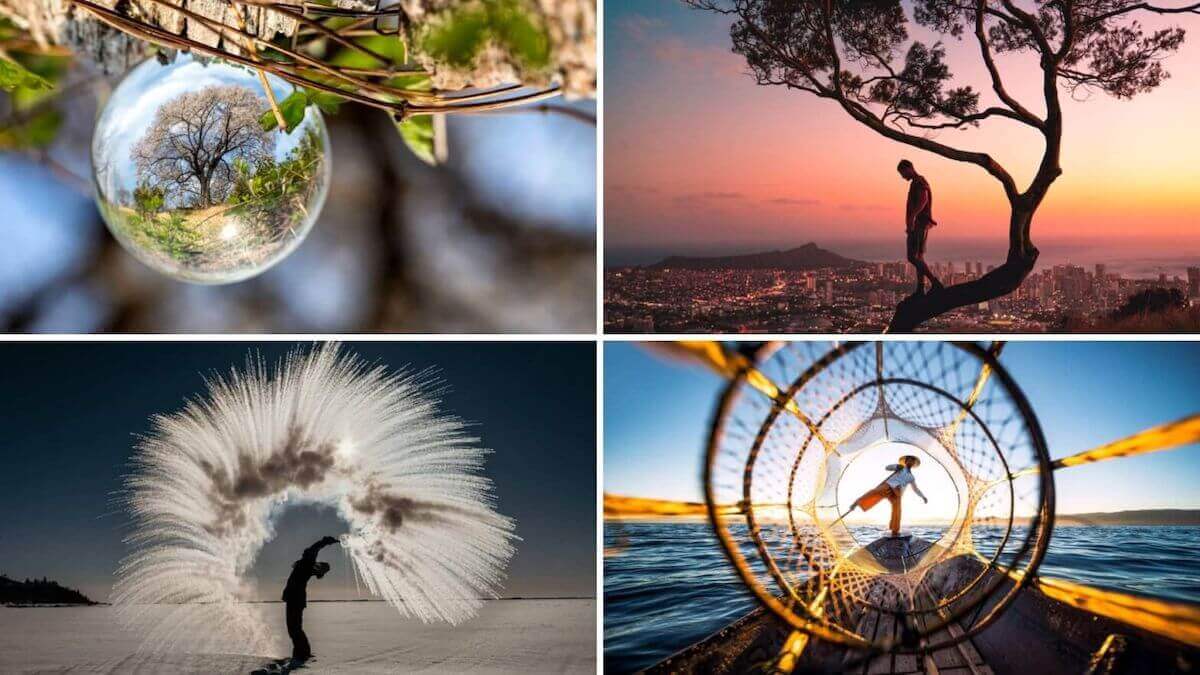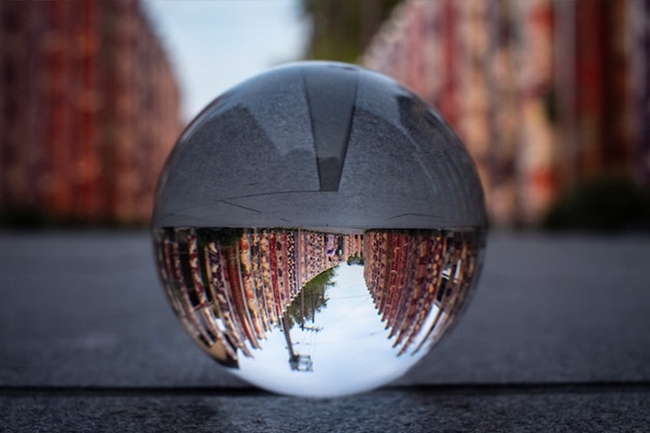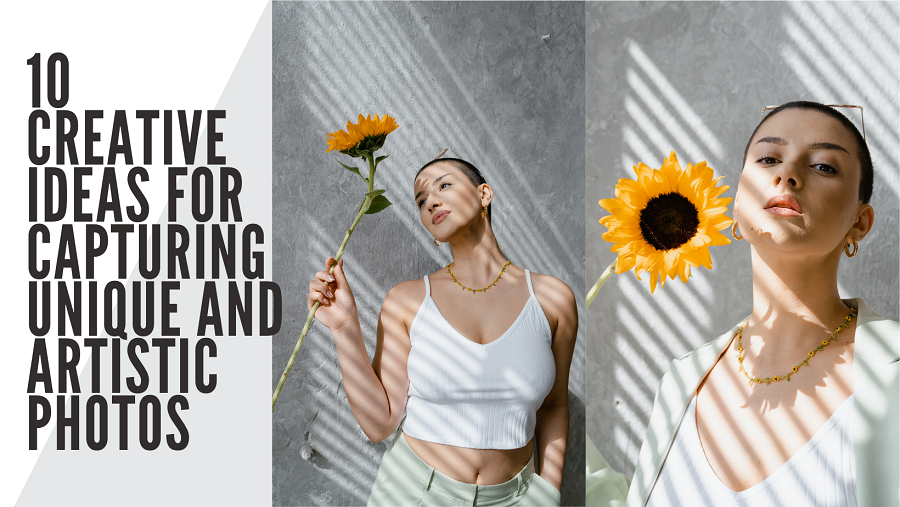Photography is a versatile art form that can be used to capture a wide range of subjects and convey different emotions and moods. While technical knowledge is essential in photography, creativity is equally important in capturing unique and artistic photos. Whether you are a professional photographer or an amateur, exploring different techniques and experimenting with different ideas can help you develop your own style and produce captivating photos.
In this article, we will explore ten creative ideas for capturing unique and artistic photos that will help you take your photography skills to the next level. From playing with reflections to experimenting with editing, these ideas will inspire you to push the boundaries of your creativity and capture photos that stand out.
10 Creative Ideas for Capturing Unique and Artistic Photos
Also Read This: How to Utilize LinkedIn for Business Success: A Comprehensive Guide
Play with Reflections:
- Play with Reflections: Look for reflective surfaces such as puddles, mirrors or glass buildings to capture interesting and artistic shots. Try to capture reflections of people, objects or scenery.
- Long Exposure: Experiment with long exposure photography to capture interesting and creative shots. This technique involves leaving the shutter open for a longer period of time, resulting in blurred or streaked effects.
- Light Painting: Use long exposure and a light source to create unique and artistic shots. You can use a flashlight, sparkler or any other light source to "paint" a design or pattern in the air.
- Nature's Textures: Look for interesting textures in nature such as tree bark, leaves, rocks or water. Use close-up or macro photography to capture the intricate details.
- Silhouettes: Capture silhouettes of people or objects against a bright background such as the sun setting or a city skyline. This creates a dramatic effect and can be very artistic.
- Minimalism: Less is more when it comes to minimalist photography. Look for simple compositions and clean lines to create artistic shots.
- Forced Perspective: Use forced perspective to create interesting and unique shots. This technique involves placing objects at different distances from the camera to create an optical illusion.
- Double Exposure: Experiment with double exposure photography to create artistic and abstract shots. This technique involves overlaying two images on top of each other.
- Color Contrast: Look for color contrast in your surroundings such as a red apple on a green leaf or a yellow flower against a blue sky. This creates visually appealing and artistic shots.
Also Read This: Flicker Streaming Site – An Overview for Enthusiasts
Shoot from Unusual Angles: 
- Shoot from Unusual Angles: Experiment with shooting from unusual angles to create unique and artistic shots. This can involve shooting from a very low angle or even from the ground, or shooting from a high angle looking down.
- Symmetry: Look for symmetry in your surroundings such as reflections, patterns or architecture. Symmetry creates a sense of balance and can be very artistic.
- Shadows: Use shadows to create interesting and artistic shots. Look for interesting shadows cast by objects or people, or create your own shadows using a flashlight.
- Candid Moments: Capture candid moments of people in their natural environment. This creates a sense of authenticity and can be very artistic.
- Black and White: Experiment with black and white photography to create artistic and timeless shots. Black and white photography can add a sense of drama and emotion to your photos.
- Bokeh: Use bokeh to create interesting and artistic shots. Bokeh is the out-of-focus area in a photo and can be used to create a dreamy or whimsical effect.
- Framing: Use natural or man-made objects to frame your subject and create interesting and artistic shots.
- Motion Blur: Experiment with motion blur to create interesting and artistic shots. This technique involves deliberately moving the camera or subject during the exposure.
- Street Photography: Capture interesting and artistic shots of people in the streets. Look for interesting characters, candid moments and unique settings.
- Night Photography: Experiment with night photography to create interesting and artistic shots. Look for interesting light sources such as streetlights, neon signs or fireworks.
Also Read This: The Simplest Way to Embed Vimeo Thumbnail Images on Your Website
Create a Double Exposure:
Creating a double exposure is a fun and creative way to produce unique and artistic photos. Here are some steps you can follow to create a double exposure:
- Choose your first image: Choose a photograph with a strong subject or a distinctive pattern or texture. This will serve as the base image for your double exposure.
- Choose your second image: Choose a photograph that has a strong contrast with the first image. This can be a photograph of a landscape, a cityscape, or any other image that you want to overlay on top of the first image.
- Open both images in Photoshop: Open both images in Adobe Photoshop. Make sure that your base image is on the bottom layer, and your second image is on top.
- Create a layer mask: Click on the layer mask button at the bottom of the Layers panel to create a layer mask for the second image. This will allow you to selectively erase parts of the second image to reveal the base image underneath.
- Paint with black to reveal the base image: With the layer mask selected, choose the Brush tool and set the color to black. Paint over the areas of the second image that you want to erase to reveal the base image underneath.
- Adjust the opacity and blending mode: Adjust the opacity and blending mode of the second image layer to create the desired effect. Try different blending modes such as Screen, Overlay, or Multiply to achieve different effects.
- Fine-tune the image: Fine-tune the image by adjusting the brightness, contrast, and color balance of the two images. You can also add filters or textures to the image to enhance the artistic effect.
- Save your image: Save your double exposure image as a high-quality JPEG or PNG file. You can then print or share your image with others to showcase your creativity.
Also Read This: Learn How to Save Rumble Videos for Free
Use Bokeh Effect:
The bokeh effect is a popular technique used to create a blurred, dreamy background in a photo. Here are some steps you can follow to create a bokeh effect:
- Choose your subject: Choose a subject that you want to focus on, such as a person, object, or flower.
- Choose your background: Choose a background with a lot of small, bright light sources, such as fairy lights, city lights, or the sun shining through leaves.
- Use a large aperture: Use a lens with a large aperture, such as f/1.8 or f/2.8, to create a shallow depth of field. This will blur the background and create the bokeh effect.
- Get close to your subject: Get close to your subject to fill the frame and blur the background even more.
- Focus on your subject: Use autofocus or manual focus to focus on your subject. Make sure the subject is sharp and in focus.
- Shoot in Aperture Priority mode: Use Aperture Priority mode on your camera to control the aperture and let the camera choose the appropriate shutter speed.
- Experiment with different angles: Experiment with different angles and distances to create different bokeh effects. You can also try moving your subject and background to create different compositions.
- Edit your photo: After capturing your photo, you can edit it in post-processing software to adjust the brightness, contrast, and color balance. You can also add filters or textures to enhance the bokeh effect.
Also Read This: The Top Stock Photo Websites for Buying and Selling Images
Shoot Through Objects:
"Shoot through objects" is a term used in photography to describe the technique of taking a photograph through an object, such as a window or a fence, that is between the photographer and the subject. This technique can create interesting and creative images with unique visual effects.
To shoot through an object, the photographer typically positions themselves close to the object and focuses on the subject beyond it. They may use a wide aperture to blur the object and create a shallow depth of field, or they may deliberately incorporate the object into the composition, using it as a framing device.
However, it's important to note that shooting through objects can also affect the quality of the final image, especially if the object is dirty or scratched. Additionally, shooting through certain objects, such as tinted glass, can cause color casts or other unwanted effects in the image.
Overall, shooting through objects can be a fun and creative way to experiment with photography, but it's important to understand the potential limitations and challenges of this technique.
Also Read This: Password Power: Changing Your Password on Photobucket
Play with Light:
Playing with light is a fundamental aspect of photography and can significantly impact the mood and overall quality of an image. Here are a few ways to play with light in your photography:
- Golden Hour: Golden hour, also known as magic hour, is the time just after sunrise or just before sunset when the light is soft and warm, creating a beautiful glow. Try shooting during this time to capture stunning images with a warm, golden hue.
- Silhouettes: Silhouettes are created when the subject is in front of a bright light source, such as the sun. The subject appears as a dark shape against the bright background. Experiment with shooting silhouettes during sunrise or sunset for a dramatic effect.
- Backlighting: Backlighting is when the subject is lit from behind, creating a halo effect around them. This technique can add depth and dimension to your images, particularly if you're shooting subjects with interesting shapes or textures.
- Light Painting: Light painting involves using a light source, such as a flashlight or sparkler, to paint designs or patterns into the image while the shutter is open. This technique can create stunning, abstract images with a unique visual effect.
- Reflections: Look for reflections in water or other reflective surfaces, such as mirrors or windows, to add interest and depth to your images.
Playing with light can take your photography to the next level, so don't be afraid to experiment and try new techniques!
Also Read This: Playlist Puzzle: Moving Songs Around in Your Spotify Playlist – Organize with Ease
Capture Motion:
Capturing motion in photography can add a dynamic element to your images and convey a sense of movement or action. Here are some tips for capturing motion in your photography:
- Use a Fast Shutter Speed: To freeze motion, you'll need to use a fast shutter speed. The exact speed will depend on the speed of the subject and the amount of motion you want to capture. For example, to freeze a fast-moving object like a racing car, you may need to use a shutter speed of 1/1000th of a second or faster.
- Panning: Panning involves following the movement of the subject with your camera while using a slower shutter speed. This creates a sharp subject with a blurred background, giving the impression of movement. Panning works best with subjects that move in a predictable path, such as a running athlete or a passing car.
- Long Exposure: A long exposure involves using a slow shutter speed to capture motion over an extended period. This technique is often used to capture light trails, such as car headlights or fireworks. Long exposures can also be used to create a sense of motion in other subjects, such as waterfalls or crowds.
- Burst Mode: Burst mode is a setting on most cameras that allows you to take a series of photos in rapid succession. This is ideal for capturing action shots, such as a basketball player jumping for a slam dunk, or a bird taking flight.
- Selective Focus: Use selective focus to isolate your subject and create a sense of motion. By using a wide aperture to create a shallow depth of field, you can blur the background while keeping your subject sharp, creating a sense of movement and action.
Also Read This: The Ultimate Guide on How to Use This OK.RU Downloader
FAQ
Here are some frequently asked questions about 10 Creative Ideas for Capturing Unique and Artistic Photos:
Do I need expensive equipment to capture unique and artistic photos?
A: No, you don't necessarily need expensive equipment to capture unique and artistic photos. While having high-quality equipment can certainly help, the most important factor is your creativity and ability to see things from a unique perspective. Many of the creative ideas listed can be achieved with a basic camera or even a smartphone.
How can I come up with creative ideas for my photos?
A: Inspiration can come from anywhere, so try to keep an open mind and explore your surroundings with a fresh perspective. Look for interesting patterns, textures, and shapes in everyday objects, experiment with different lighting conditions, and try new techniques.
Are there any specific editing techniques I should use for unique and artistic photos?
A: There is no one-size-fits-all answer to this question, as editing techniques depend on the style and mood you want to convey in your photos. However, some popular editing techniques include using selective color, playing with contrast and saturation, and adding filters to create a specific mood.
Can I combine multiple creative ideas in one photo?
A: Absolutely! Combining different creative ideas can result in even more unique and artistic photos. Experiment with different combinations to find what works best for you.
How do I know if my photos are unique and artistic?
A: Art is subjective, and what one person considers unique and artistic may differ from another's opinion. However, if your photos evoke emotions or convey a specific mood, and if they make people stop and look at them, then you are on the right track. Ultimately, the most important thing is that you are happy with your photos and that they represent your personal style and vision.
Conclusion
In conclusion, capturing unique and artistic photos requires a combination of technical knowledge and creativity. By exploring different techniques and experimenting with new ideas, you can develop your own style and produce captivating photos that stand out. Whether you have expensive equipment or just a basic camera, the most important factor is your ability to see things from a unique perspective and find beauty in everyday objects. So, go out there and start exploring the world with a fresh perspective, and let your creativity flow to capture stunning and memorable photos.















